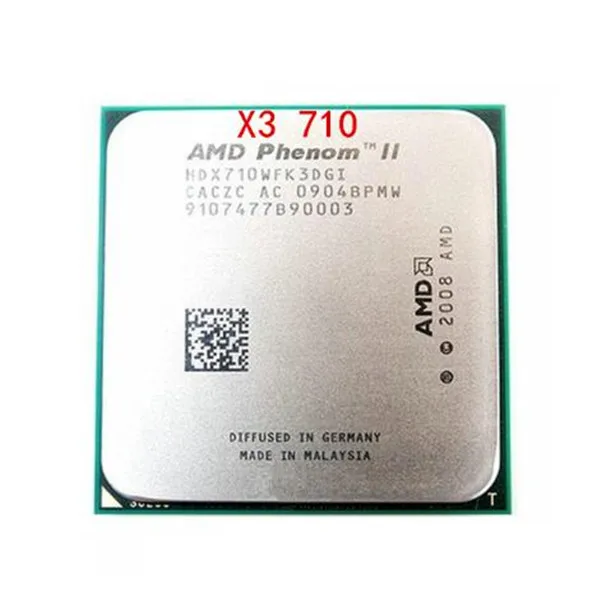AMD Phenom II X4 Processors List
Filter by codename
- Deneb
- Propus
- Zosma
| Name | Cores / Threads | Clock | Socket | L3 Cache | TDP | Released |
|---|---|---|---|---|---|---|
| AMD Phenom II X4 650T Phenom II X4 (Zosma) |
4 / 4 | 2.7 GHz (up to 3.2 GHz) |
AMD Socket AM3 | 4MB (shared) | 95 W | 1 July 2011 |
| AMD Phenom II X4 850 Phenom II X4 (Propus) |
4 / 4 | 3.3 GHz | AMD Socket AM3 | — | 95 W | 1 June 2011 |
| AMD Phenom II X4 980 BE Phenom II X4 (Deneb) |
4 / 4 | 3.7 GHz | AMD Socket AM3 | 6MB (shared) | 125 W | 3 May 2011 |
| AMD Phenom II X4 840 Phenom II X4 (Propus) |
4 / 4 | 3.2 GHz | AMD Socket AM3 | — | 95 W | 4 January 2011 |
| AMD Phenom II X4 975 BE Phenom II X4 (Deneb) |
4 / 4 | 3. |
AMD Socket AM3 | 6MB (shared) | 125 W | 4 January 2011 |
| AMD Phenom II X4 970 BE Phenom II X4 (Zosma) |
4 / 4 | 3.5 GHz | AMD Socket AM3 | 6MB (shared) | 125 W | 1 October 2010 |
| AMD Phenom II X4 970 BE Phenom II X4 (Deneb) |
4 / 4 | 3.5 GHz | AMD Socket AM3 | 6MB (shared) | 125 W | 21 September 2010 |
| AMD Phenom II X4 840T Phenom II X4 (Zosma) |
4 / 4 | 2.9 GHz (up to 3.2 GHz) |
AMD Socket AM3 | 6MB (shared) | 95 W | 1 September 2010 |
| AMD Phenom II X4 960T BE Phenom II X4 (Zosma) |
4 / 4 | 3 GHz (up to 3.4 GHz) |
AMD Socket AM3 | 6MB (shared) | 95 W | 1 June 2010 |
| AMD Phenom II X4 B97 Phenom II X4 (Deneb) |
4 / 4 | 3. 2 GHz 2 GHz |
AMD Socket AM3 | 6MB (shared) | 95 W | 11 May 2010 |
| AMD Phenom II X4 910e Phenom II X4 (Deneb) |
4 / 4 | 2.6 GHz | AMD Socket AM3 | 6MB (shared) | 65 W | 25 January 2010 |
| AMD Phenom II X4 965 BE (125W) Phenom II X4 (Deneb) |
4 / 4 | 3.4 GHz | AMD Socket AM3 | 6MB (shared) | 125 W | 7 November 2009 |
| AMD Phenom II X4 B95 Phenom II X4 (Deneb) |
4 / 4 | 3 GHz | AMD Socket AM3 | 6MB (shared) | 95 W | 1 October 2009 |
| AMD Phenom II X4 B93 Phenom II X4 (Deneb) |
4 / 4 | 2.8 GHz | AMD Socket AM3 | 6MB (shared) | 95 W | 1 October 2009 |
| AMD Phenom II X4 830 Phenom II X4 (Deneb) |
4 / 4 | 2.8 GHz | AMD Socket AM3 | 4MB (shared) | 95 W | 1 September 2009 |
| AMD Phenom II X4 820 Phenom II X4 (Deneb) |
4 / 4 | 2.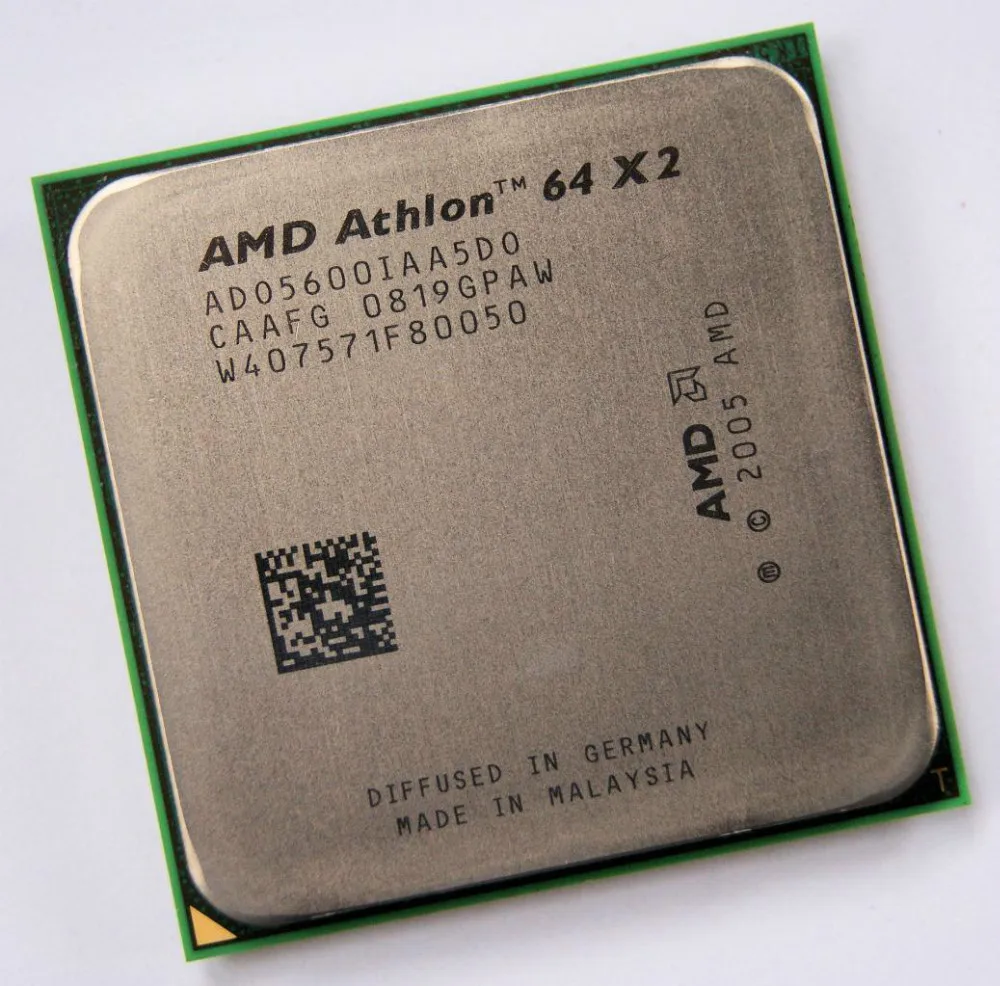 8 GHz 8 GHz |
AMD Socket AM3 | 4MB (shared) | 95 W | 1 September 2009 |
| AMD Phenom II X4 965 BE (140W) Phenom II X4 (Deneb) |
4 / 4 | 3.4 GHz | AMD Socket AM3 | 6MB (shared) | 140 W | 13 August 2009 |
| AMD Phenom II X4 945 (95W) Phenom II X4 (Deneb) |
4 / 4 | 3 GHz | AMD Socket AM3 | 6MB (shared) | 95 W | 22 July 2009 |
| AMD Phenom II X4 900e Phenom II X4 (Deneb) |
4 / 4 | 2.4 GHz | AMD Socket AM3 | 6MB (shared) | 65 W | 2 June 2009 |
| AMD Phenom II X4 905e Phenom II X4 (Deneb) |
4 / 4 | 2.5 GHz | AMD Socket AM3 | 6MB (shared) | 65 W | 2 June 2009 |
| AMD Phenom II 42 TWKR Black Edition Phenom II X4 (Deneb) |
4 / 4 | 2000 MHz | AMD Socket AM3 | 6MB (shared) | 125 W | 1 June 2009 |
| AMD Phenom II X4 925 Phenom II X4 (Deneb) |
4 / 4 | 2. 8 GHz 8 GHz |
AMD Socket AM3 | 6MB (shared) | 95 W | 11 May 2009 |
| AMD Phenom II X4 945 (125W) Phenom II X4 (Deneb) |
4 / 4 | 3 GHz | AMD Socket AM3 | 6MB (shared) | 125 W | 23 April 2009 |
| AMD Phenom II X4 955 BE Phenom II X4 (Deneb) |
4 / 4 | 3.2 GHz | AMD Socket AM3 | 6MB (shared) | 125 W | 23 April 2009 |
| AMD Phenom II X4 955 (125W) Phenom II X4 (Deneb) |
4 / 4 | 3.2 GHz | AMD Socket AM3 | 6MB (shared) | 125 W | 1 April 2009 |
| AMD Phenom II X4 955 (95W) Phenom II X4 (Deneb) |
4 / 4 | 3.2 GHz | AMD Socket AM3 | 6MB (shared) | 95 W | 1 April 2009 |
| AMD Phenom II X4 810 Phenom II X4 (Deneb) |
4 / 4 | 2.6 GHz | AMD Socket AM3 | 4MB (shared) | 95 W | 9 February 2009 |
| AMD Phenom II X4 805 Phenom II X4 (Deneb) |
4 / 4 | 2. 5 GHz 5 GHz |
AMD Socket AM3 | 4MB (shared) | 95 W | 9 February 2009 |
| AMD Phenom II X4 910 Phenom II X4 (Deneb) |
4 / 4 | 2.6 GHz | AMD Socket AM3 | 6MB (shared) | 95 W | 9 February 2009 |
| AMD Phenom II X4 940 BE Phenom II X4 (Deneb) |
4 / 4 | 3 GHz | AMD Socket AM3 | 6MB (shared) | 125 W | 8 January 2009 |
| AMD Phenom II X4 920 Phenom II X4 (Deneb) |
4 / 4 | 2.8 GHz | AMD Socket AM3 | 6MB (shared) | 125 W | 8 January 2009 |
Browse by generation
- A10
- A12
- A4
- A6
- A8
- A9
- Athlon
- Athlon 64
- Athlon 64 FX
- Athlon 64 X2
- Athlon II X2
- Athlon II X3
- Athlon II X4
- Athlon Model 4
- Athlon X2
- Athlon XP
- C
- E
- E1
- E2
- EPYC
- EPYC Embedded
- FX
- Mobile Athlon 64
- Mobile Sempron
- Opteron
- Opteron X2
- Phenom II X2
- Phenom II X3
- Phenom II X4
- Phenom II X6
- Phenom X3
- Phenom X4
- Ryzen 3
- Ryzen 5
- Ryzen 7
- Ryzen 9
- Ryzen Embedded
- Ryzen Threadripper
- Sempron
- Sempron X2
- Turion 64
- Turion X2
- Turion X2 Ultra
- Z
Top 8 Best AMD Phenom II CPU Processors in 2023 (Reviews)
Mike Davis
Last Updated: May 24, 2023
AMD Phenom II CPU processors are a popular choice for those seeking a high-performance processor for their desktop system.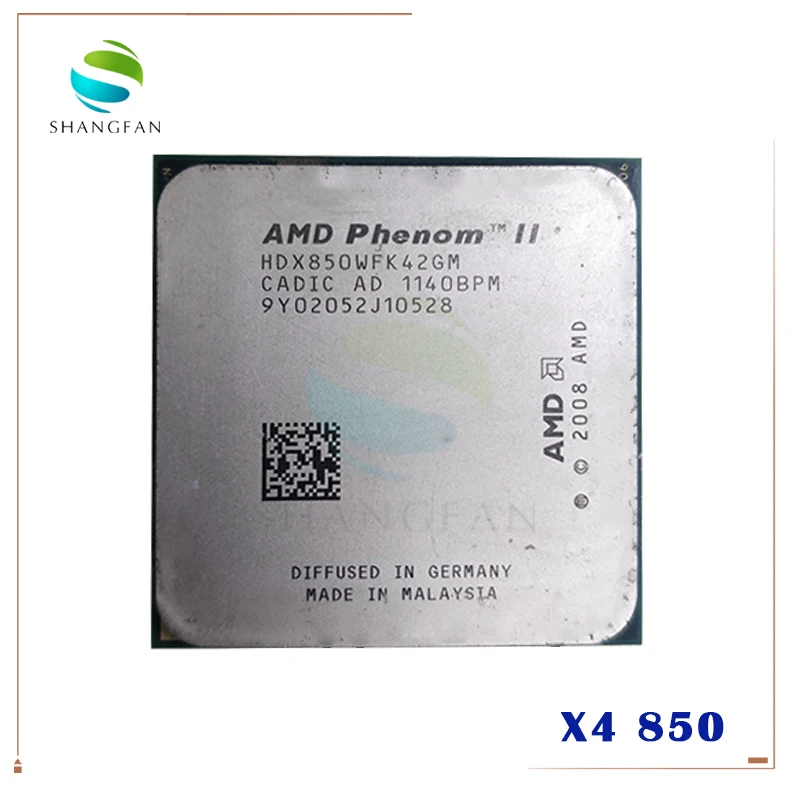 With clock speeds ranging from 2.5 GHz to 3.7 GHz, these processors offer excellent performance for gaming, video editing, and other intensive tasks. They also feature multiple cores, allowing for efficient multitasking and improved system responsiveness. Additionally, AMD Phenom II CPUs are compatible with a wide range of motherboards and offer excellent value for their price point. Overall, these processors are a reliable choice for those seeking a powerful and cost-effective CPU solution.
With clock speeds ranging from 2.5 GHz to 3.7 GHz, these processors offer excellent performance for gaming, video editing, and other intensive tasks. They also feature multiple cores, allowing for efficient multitasking and improved system responsiveness. Additionally, AMD Phenom II CPUs are compatible with a wide range of motherboards and offer excellent value for their price point. Overall, these processors are a reliable choice for those seeking a powerful and cost-effective CPU solution.
* Our editing teams independently research, review, and recommend the best products based on extensive data analysis; if you click on the product links, we may earn a commission from qualifying purchases.
At a Glance: Our Top Picks
#TOP
1
AMD Phenom II X4 965 CPU Processor
9.9
FTB Score
#TOP
3
AMD Phenom II X6 1100T Black Edition CPU Processor
9.6
FTB Score
Top 8 Best AMD Phenom II CPU Processors
AMD
965 125W
6.50 x 3.40 x 1.00 inches
The AMD Phenom II X4 965 CPU Processor is a 64-bit processor with a clock frequency of 3.4GHz and a clock multiplier of 17. It has a bus speed of 667 MHz Memory controller and one 2000 MHz 16-bit HyperTransport link (4 GT/s).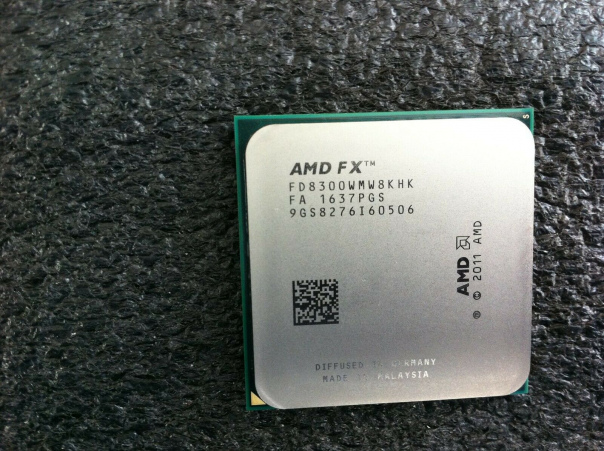 This quad-core processor has four threads and a Thermal Design Power of 125 Watt. With L2 cache of 4 x 512 KB and L3 cache of 6MB, the AMD Phenom II X4 965 is a powerful processor that can handle multiple tasks and applications with ease. Its fast clock speed and high cache memory make it suitable for gaming, video editing, and other CPU-intensive tasks.
This quad-core processor has four threads and a Thermal Design Power of 125 Watt. With L2 cache of 4 x 512 KB and L3 cache of 6MB, the AMD Phenom II X4 965 is a powerful processor that can handle multiple tasks and applications with ease. Its fast clock speed and high cache memory make it suitable for gaming, video editing, and other CPU-intensive tasks.
What We Like
Quad-core processor
Can handle games prior to 2020
Good replacement for old motherboard
Can revive aging system
Overclockable for improved performance
AMD
HDZ955FBGMBOX
3.80 x 1.90 x 0.40 inches
1.66 pounds
The AMD Phenom II X4 955 Black Edition CPU Processor is a budget-friendly option that offers multicore processing power. With four 3.2 GHz cores, it can handle even the most highly threaded applications. The processor also features an unlocked multiplier that allows for overclocking, and an ultra-wide bandwidth for quick memory access. It is compatible with motherboards with an AM2+ or AM3 socket, making it easy to transition from older sockets. This CPU processor is designed to handle next-gen games and is quiet, cool, and energy efficient.
This CPU processor is designed to handle next-gen games and is quiet, cool, and energy efficient.
What We Like
Four 3.2 GHz cores for blazing-fast processing
Unlocked multiplier offers flexibility for overclocking
Fast, ultra-wide bandwidth for quick memory access
AMD
1100T
The AMD Phenom II X6 Processor is a powerful CPU processor designed for high-speed performance. With a bus speed of 667 MHz memory controller and one 2000 MHz 16-bit HyperTransport link, this processor can handle multiple tasks with ease. It features six cores, each with a 512 KB cache size, providing a total of 3 MB of cache memory. This processor also has a clock multiplier of 16.5, allowing for even faster processing speeds. Overall, the AMD Phenom II X6 Processor is an ideal choice for users looking for a reliable and high-performance CPU processor.
What We Like
High performance
Reliable
Good for power users
Fastest in its family
#TOP 4
AMD Phenom II X4 940 Processor
AMD
HDZ940XCGIBOX
0. 40 x 0.40 x 0.40 inches
40 x 0.40 x 0.40 inches
0.22 pounds
The AMD Phenom II X4 940 Processor is a powerful quad-core processor that has a clock speed of 3.0GHz and 8MB cache memory. It is compatible with Socket AM2+ and has a TDP of 125W. This processor is perfect for users who demand high-performance computing, whether for gaming, content creation, or multitasking. The quad-core design allows for efficient multitasking while the 8MB cache memory ensures faster access to frequently used data. The 3.0GHz clock speed provides fast processing and is ideal for running resource-intensive applications. The Socket AM2+ compatibility ensures easy installation and compatibility with a wide range of motherboards. Overall, the AMD Phenom II X4 940 Processor is a reliable and high-performance processor that offers excellent value for money.
What We Like
Quad-core design
8MB cache memory
3.0GHz clock speed
#TOP 5
AMD Phenom II X4 955 Processor
AMD
HDX955WFK4DGM
The AMD Quad-Core Processor is a high-performance CPU that fits in both AMD socket AM2+ and AM3.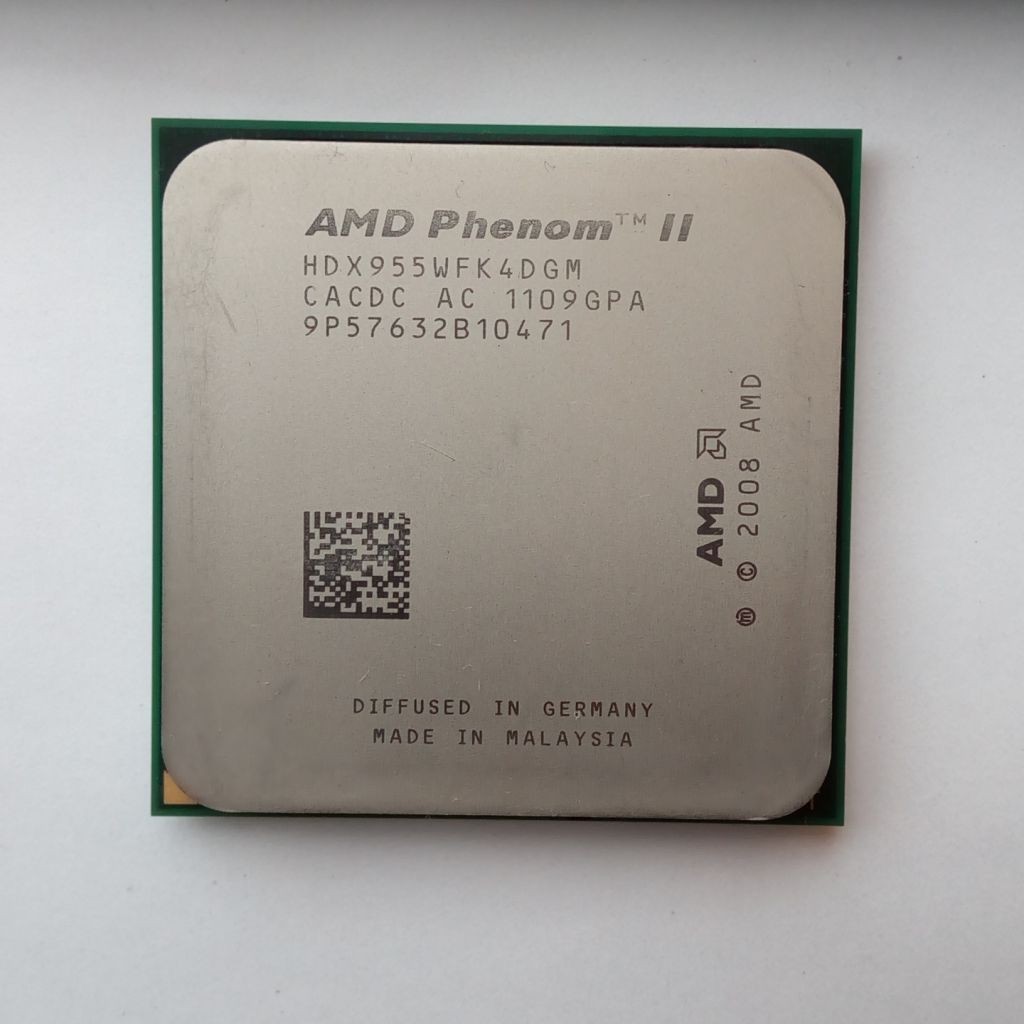 It comes with a 6 MB L3 cache and 4 x 512 KB L2 cache, providing fast data access and processing. With a 95 Watt Thermal Design Power, it delivers high energy efficiency and low power consumption. The quad-core design enables you to multitask efficiently, running multiple applications without slowing down your system. The processor is perfect for gamers, content creators, and anyone who needs a powerful CPU.
It comes with a 6 MB L3 cache and 4 x 512 KB L2 cache, providing fast data access and processing. With a 95 Watt Thermal Design Power, it delivers high energy efficiency and low power consumption. The quad-core design enables you to multitask efficiently, running multiple applications without slowing down your system. The processor is perfect for gamers, content creators, and anyone who needs a powerful CPU.
What We Like
High-performance
Low power consumption
Quad-core design
AMD
HDT55TFBK6DGR
The AMD Phenom II X6 1055T Six Core CPU Processor is a powerful and reliable option for those in need of a high-performance CPU. With a frequency of 2.8GHz and 6 cores, this processor is capable of handling even the most demanding tasks. It features a 6MB L3 cache and 6 x 512KB L2 cache, as well as a thermal design power of 125 watts. The processor is fully tested and comes with a 3-month warranty, but it’s important to consult with the seller to ensure compatibility with your motherboard before purchasing.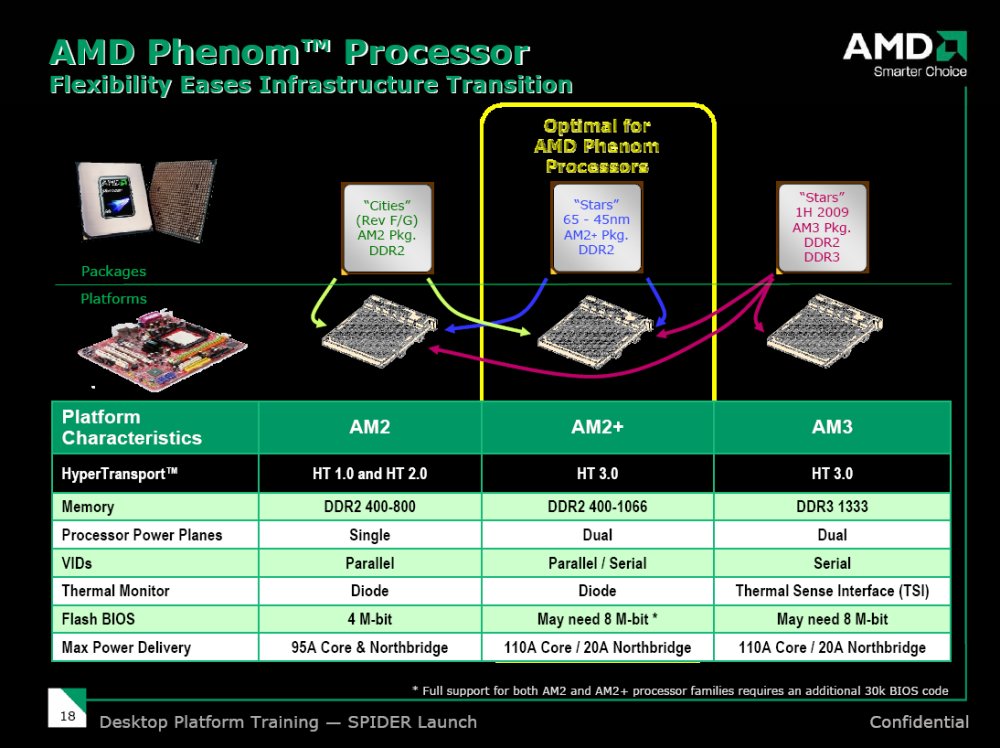
What We Like
Powerful 6-core processor with a frequency of 2.8GHz
6MB L3 cache and 6 x 512KB L2 cache for efficient performance
Comes with a 3-month warranty and is fully tested
#TOP 7
AMD Phenom II X6 1055T Processor
AMD
HDT55TWFGRBOX
0.34 kilograms
The AMD Phenom II X6 is a CPU processor designed for high definition entertainment, advanced multitasking performance, and energy efficiency. With its native Multi-Core Technology, you can expect a smoother and faster experience, even when running complex software applications. This processor delivers unbeatable multi-core value, making it an excellent choice for users who require high-performance computing. Additionally, the AMD Phenom II X6 comes equipped with power-saving innovations that allow for smaller, cooler machines that are energy-efficient. Overall, this processor is an excellent choice for users who demand exceptional performance and energy efficiency from their computing devices.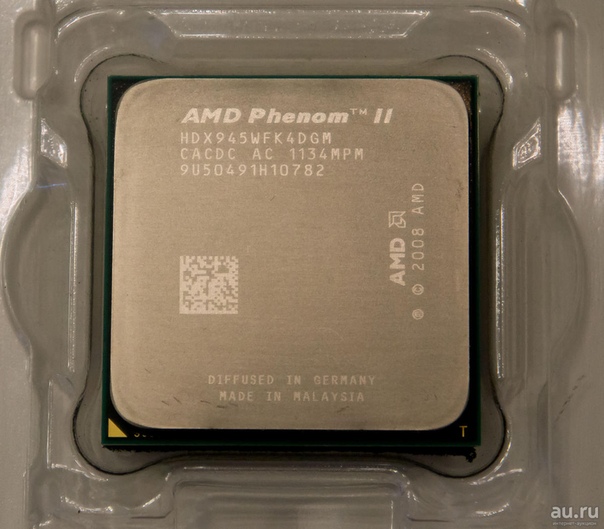
What We Like
Unbeatable multi-core value
The Ultimate Visual Experience
Native Multi-Core Technology
AMD
HDZ955FBK4DGM
The AMD Phenom II X4 955 Black Edition CPU is a powerful quad-core processor that offers a 3.2 GHz core speed, 4 x 512 KB L2 cache, and 6 MB L3 cache. It features an integrated 144-bit DDR2/DDR3 SDRAM memory controller and HyperTransport 3 technology, providing a high-bandwidth interface for the CPU to access your system’s RAM. This CPU is built using a 45 nm fabrication process and features four cores on die, giving you the power of four CPUs in one Socket AM3 package, allowing you to use it with Socket AM3, AM2+ and even AM2 motherboards.
What We Like
Unlocked multiplier for overclocking
Integrated memory controller
Compatible with Socket AM3, AM2+, and AM2 motherboards
Why We Recommend AMD Phenom II CPU Processors
Introduction
When it comes to choosing a CPU processor, there are a lot of options out there. However, if you’re looking for high performance at an affordable price, AMD Phenom II processors are a great choice. In this article, we’ll discuss how to choose the right AMD Phenom II processor for your needs.
However, if you’re looking for high performance at an affordable price, AMD Phenom II processors are a great choice. In this article, we’ll discuss how to choose the right AMD Phenom II processor for your needs.
Understanding the Basics
Before we dive into the specifics, it’s important to understand the basics of CPU processors. A processor is essentially the brain of your computer, responsible for executing instructions and performing calculations. The speed and performance of your processor can have a big impact on your computer’s overall performance.
When it comes to choosing a processor, there are a few key factors to consider. These include clock speed (measured in GHz), the number of cores, and the cache size. Generally speaking, higher numbers in these categories indicate better performance.
Clock Speed
Clock speed refers to the number of cycles per second that a processor can execute. The higher the clock speed, the faster the processor can perform calculations. However, it’s important to note that clock speed isn’t the only factor that affects performance. A processor with multiple cores and a larger cache can also perform better, even if its clock speed is lower.
However, it’s important to note that clock speed isn’t the only factor that affects performance. A processor with multiple cores and a larger cache can also perform better, even if its clock speed is lower.
Cores
A core is essentially a processing unit within a processor. A processor with more cores can execute more instructions simultaneously, which can lead to better performance. For example, a quad-core processor can execute four instructions at once, while a dual-core processor can only execute two.
However, it’s important to note that not all software is optimized to take advantage of multiple cores. In some cases, a processor with fewer cores but a higher clock speed may actually perform better.
Cache Size
The cache is a high-speed memory buffer that stores frequently accessed data. A larger cache can lead to better performance, as the processor can access data more quickly. However, it’s important to note that cache size isn’t the only factor that affects performance.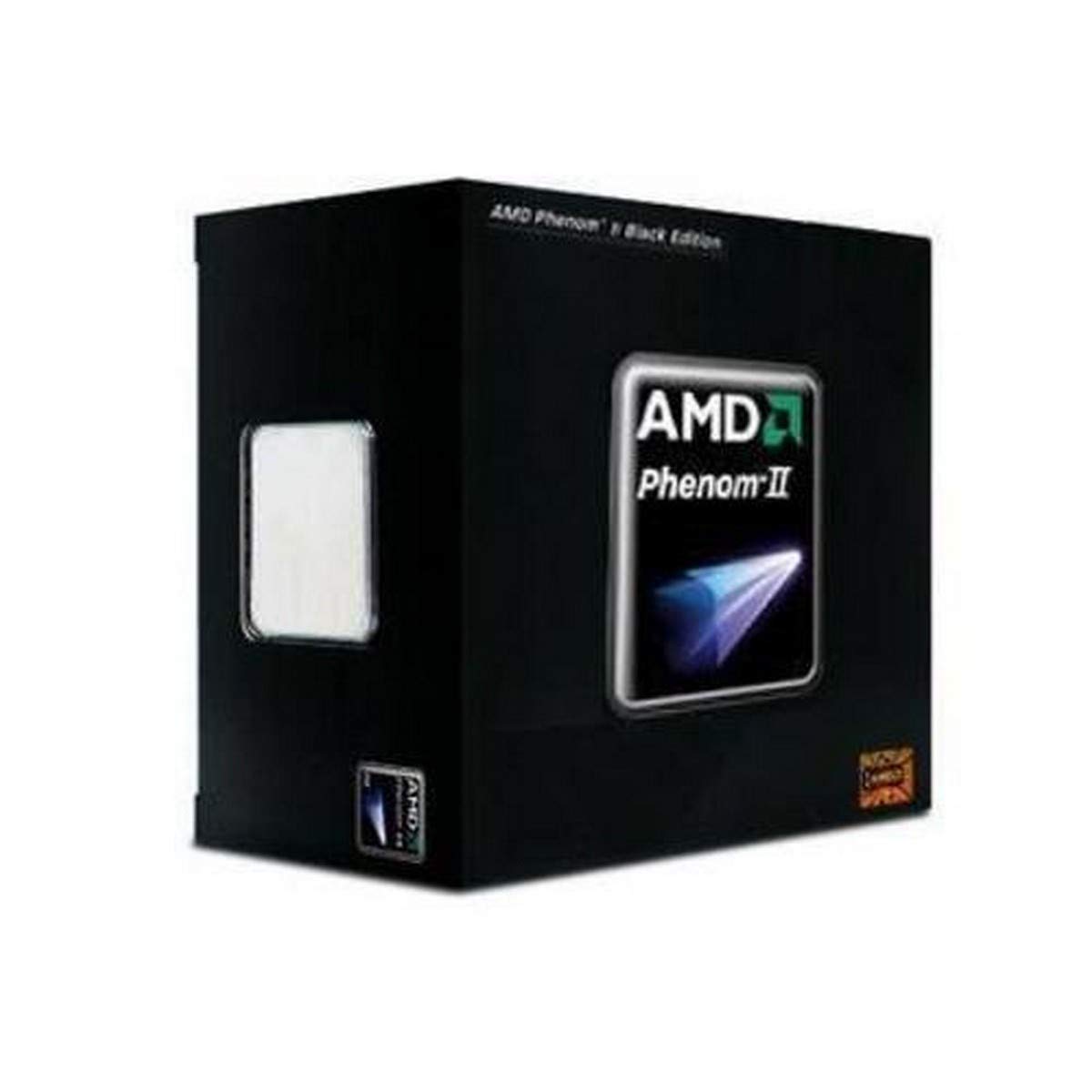
Choosing the Right Processor
When it comes to choosing the right AMD Phenom II processor, there are a few factors to consider. First, consider your budget. AMD Phenom II processors are generally more affordable than their Intel counterparts, making them a great choice for budget-conscious buyers.
Next, consider your needs. If you’re a gamer or a power user, you’ll likely want a processor with multiple cores and a high clock speed. On the other hand, if you’re simply using your computer for basic tasks like web browsing and word processing, a processor with fewer cores and a lower clock speed may be sufficient.
Finally, consider the specific model of AMD Phenom II processor you’re considering. Each model has different specs in terms of clock speed, number of cores, and cache size. Be sure to read reviews and benchmarks to ensure that the model you choose will meet your needs.
Conclusion
In conclusion, choosing the right AMD Phenom II processor is all about understanding your needs and budget.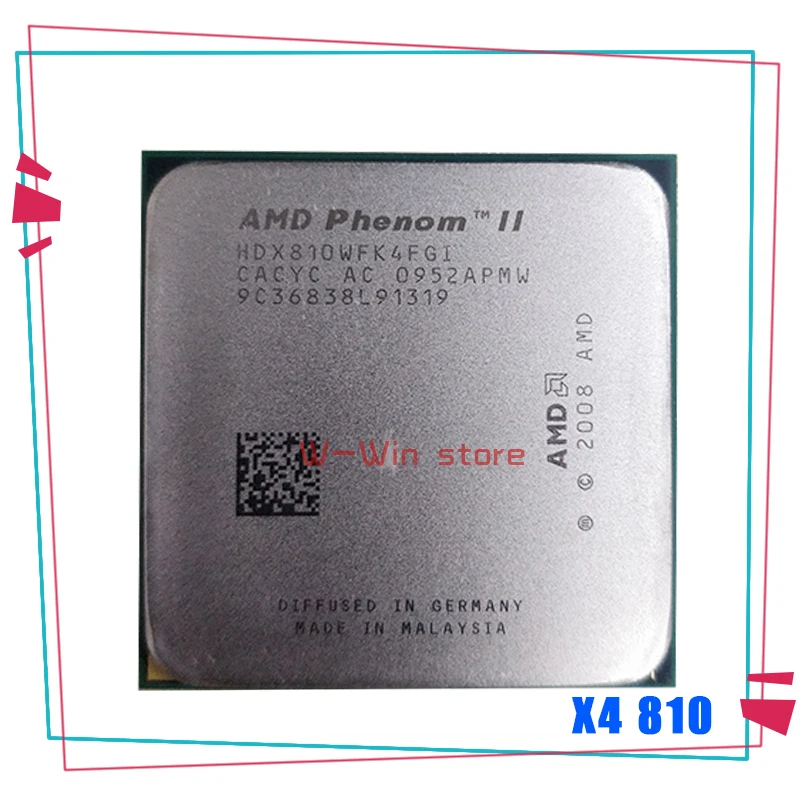 Consider factors like clock speed, number of cores, and cache size when making your decision, and be sure to read reviews and benchmarks before making a purchase. With the right AMD Phenom II processor, you can enjoy high performance at an affordable price.
Consider factors like clock speed, number of cores, and cache size when making your decision, and be sure to read reviews and benchmarks before making a purchase. With the right AMD Phenom II processor, you can enjoy high performance at an affordable price.
Editor’s Notes
During our amd phenom ii cpu processor research, we found 139 amd phenom ii cpu processor products and shortlisted 8 quality products. We collected and analyzed 5,443 customer reviews through our big data system to write the amd phenom ii cpu processors list. We found that most customers choose amd phenom ii cpu processors with an average price of $90.76.
The amd phenom ii cpu processors are available for purchase. We have researched hundreds of brands and picked the top brands of amd phenom ii cpu processors, including AMD and more. The seller of top 1 product has received honest feedback from 129 consumers with an average rating of 4.6.
Written by
Mike Davis
Mike Davis is a professionally trained electrician with six years of working experience in the electronics industry. He has written an array of web and mobile-based articles for e-magazines and blogs. He loves trying out some novel and popular gadgets and his expertise is in the areas of electronics and computers which is built over many years of working and personal experiences.
He has written an array of web and mobile-based articles for e-magazines and blogs. He loves trying out some novel and popular gadgets and his expertise is in the areas of electronics and computers which is built over many years of working and personal experiences.
AMD Phenom and Phenom II x2, x3, x4, x6 Processors: Complete List
Phenom and Phenom II are AMD’s line of 64-bit desktop processors. The processors in this line are based on the K10 architecture, which AMD refers to as the 10h processor family. In this article, we will talk about the Phenom processor line, as well as provide a complete list of processors that have been released since the existence of this line.
Table of Contents
Phenom 9 at a Glance0007
The Phenom line appeared in 2007 and existed until 2011. The first Phenom processors were released for socket AM2+, later Phenom II appeared, which were released mainly for AM3 and AM3+.
When the first four core models of this line were released, AMD emphasized that only these processors can be considered truly quad-core, since then the Intel Core 2 Quad series is a multi-chip assembly, and in the case of Phenom, all four cores are on a single silicon chip .
The initial launch of the Phenom processors was not without noticeable problems. Just before the release of these processors, a serious bug was discovered in them, which could potentially lead to a system lock. To resolve this issue, a BIOS update was released that programmatically disabled the failed module. But, such a solution led to a decrease in performance by 10% or more. And due to the fact that this BIOS did not appear immediately, buyers received slower processors than those provided to the specialized media before the release. In later releases of Phenom processors (beginning with the B3 stepping), this error was fixed by hardware.
The early Phenom processor architecture included a 128-bit DDR2 memory controller at up to 1066 MHz (DDR3 support will be implemented later), 128 KB L1 cache per core, 512 KB L2 cache per core core, as well as a 2 MB L3 cache common to all cores.
One of the important features of this architecture was the emergence of new technologies to save energy. For example, Cool’n’Quiet 2.0 technology allows you to reduce the supply voltage, the clock frequency of the entire processor, as well as the clock frequency of individual cores, AMD CoolCore technology allows you to disable inactive core modules, and Dual Dynamic Power Management technology allows you to set different voltages for different processor cores and memory controller.
For example, Cool’n’Quiet 2.0 technology allows you to reduce the supply voltage, the clock frequency of the entire processor, as well as the clock frequency of individual cores, AMD CoolCore technology allows you to disable inactive core modules, and Dual Dynamic Power Management technology allows you to set different voltages for different processor cores and memory controller.
Phenom X3 processors
| Stepping | Frequency | L2 cache | L3 cache | Hyper Transport Frequency | HT base frequency multiplier | Voltage | TDP | Socket | |
| AMD Phenom X3 8250e | B3 | 1.9 GHz | 3x 512 KB | 2 MB | 1.6 GHz | 9.5x | 1.125 — 1.20 | 65W | AM2+ |
| AMD Phenom X3 8400 | B2 | 2.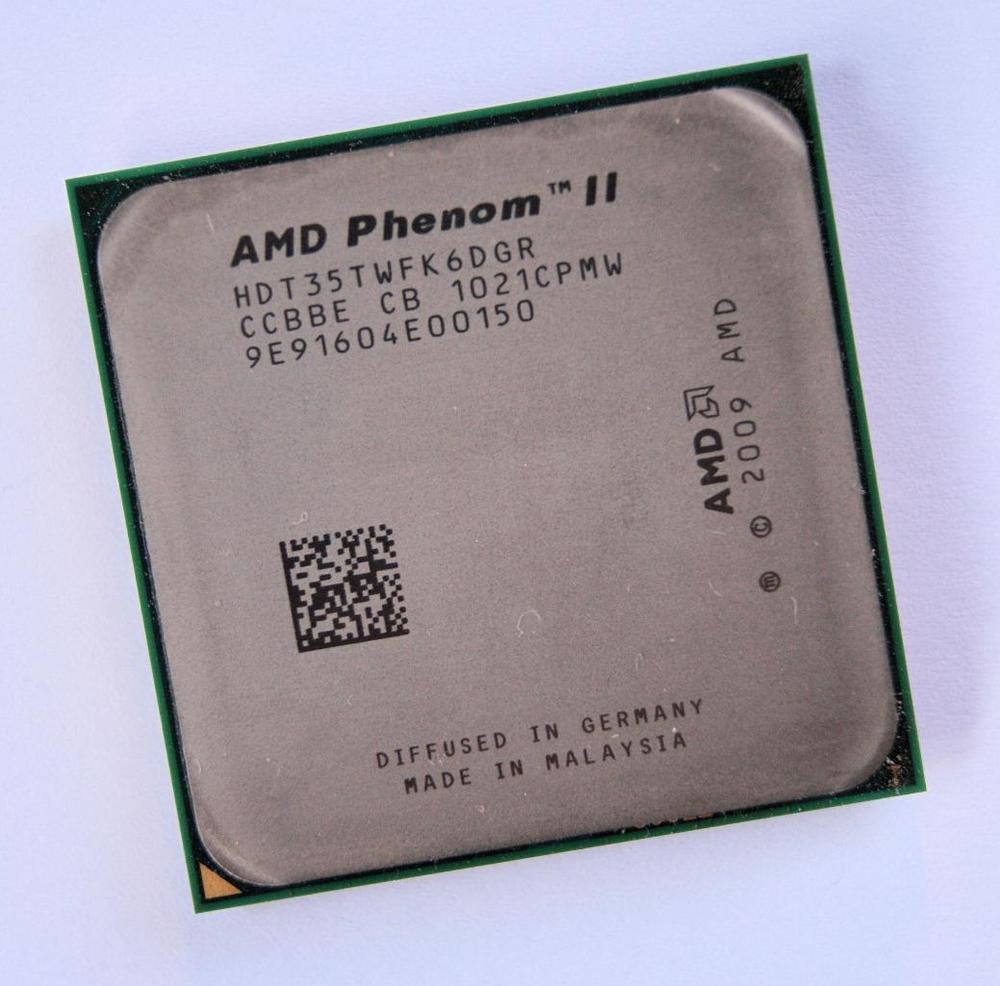 1GHz 1GHz |
3x 512 KB | 2 MB | 1.8 GHz | 10.5x | 1.20 — 1.25 | 95W | AM2+ |
| AMD Phenom X3 8450 | B3 | 2.1GHz | 3x 512 KB | 2 MB | 1.8 GHz | 10.5x | 1.20 — 1.25 | 95W | AM2+ |
| AMD Phenom X3 8450e | B3 | 2.1GHz | 3x 512 KB | 2 MB | 1.8 GHz | 10.5x | 1.125 — 1.20 | 65 W | AM2+ |
| AMD Phenom X3 8550 | B3 | 2.2 GHz | 3x 512 KB | 2 MB | 1.8 GHz | 11x | 1.20 — 1.25 | 95W | AM2+ |
| AMD Phenom X3 8600 | B2 | 2.3GHz | 3x 512 KB | 2 MB | 1.8 GHz | 11.5x | 1.20 — 1.25 | 95W | AM2+ |
| AMD Phenom X3 8650 | B3 | 2. 3GHz 3GHz |
3x 512 KB | 2 MB | 1.8 GHz | 11.5x | 1.20 — 1.25 | 95W | AM2+ |
| AMD Phenom X3 8750 | B3 | 2.4 GHz | 3x 512 KB | 2 MB | 1.8 GHz | 12x | 1.20 — 1.25 | 95W | AM2+ |
| AMD Phenom X3 8750 Black Edition | B3 | 2.4 GHz | 3x 512 KB | 2 MB | 1.8 GHz | 12x | 1.20 — 1.25 | 95 W | AM2+ |
| AMD Phenom X3 8850 | B3 | 2.5 GHz | 3x 512 KB | 2 MB | 1.8 GHz | 12.5x | 1.20 — 1.25 | 95W | AM2+ |
Phenom X4 processors
 8 GHz
8 GHz 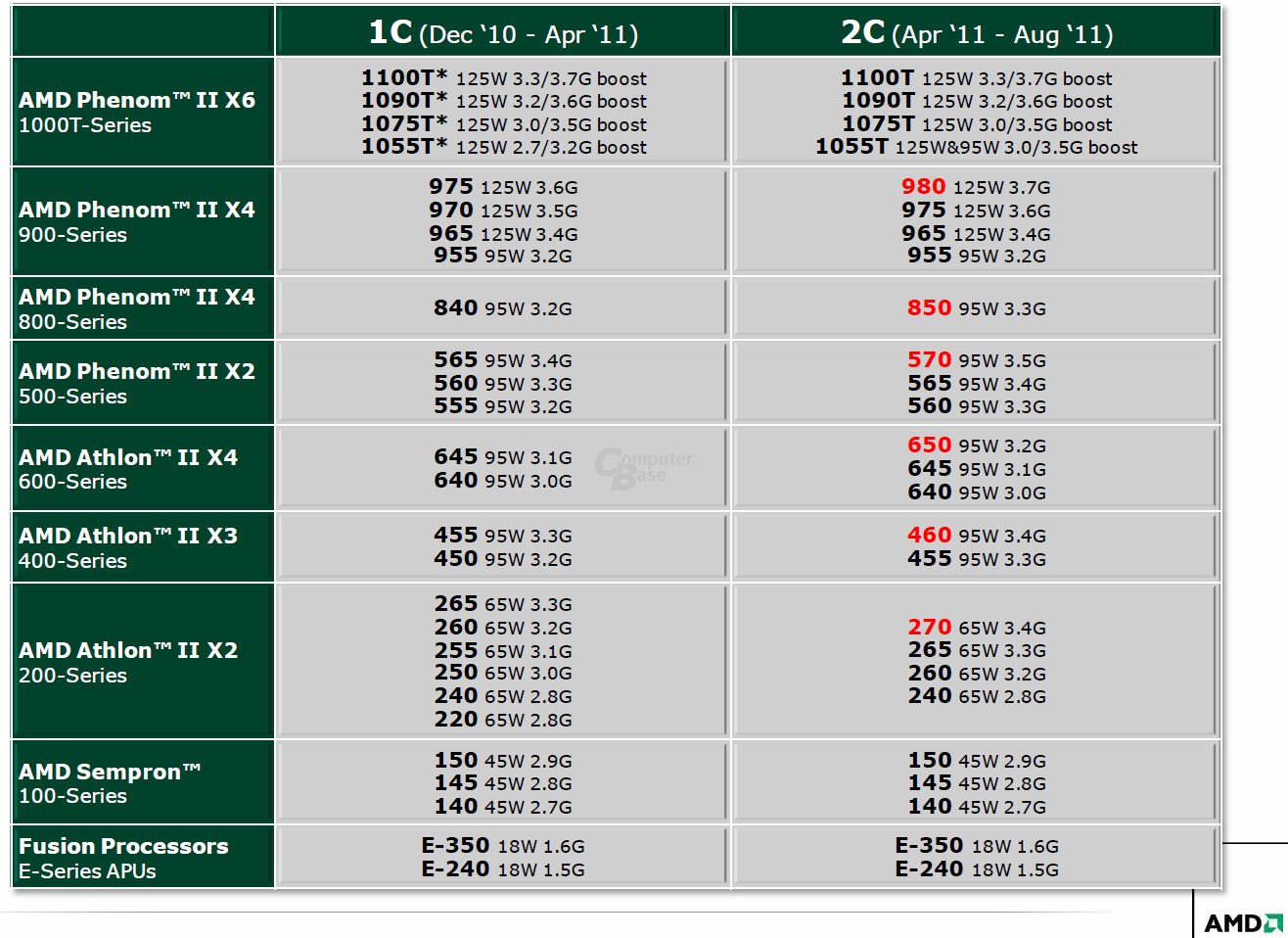 2 GHz
2 GHz  5 GHz
5 GHz Phenom II X2 Processors
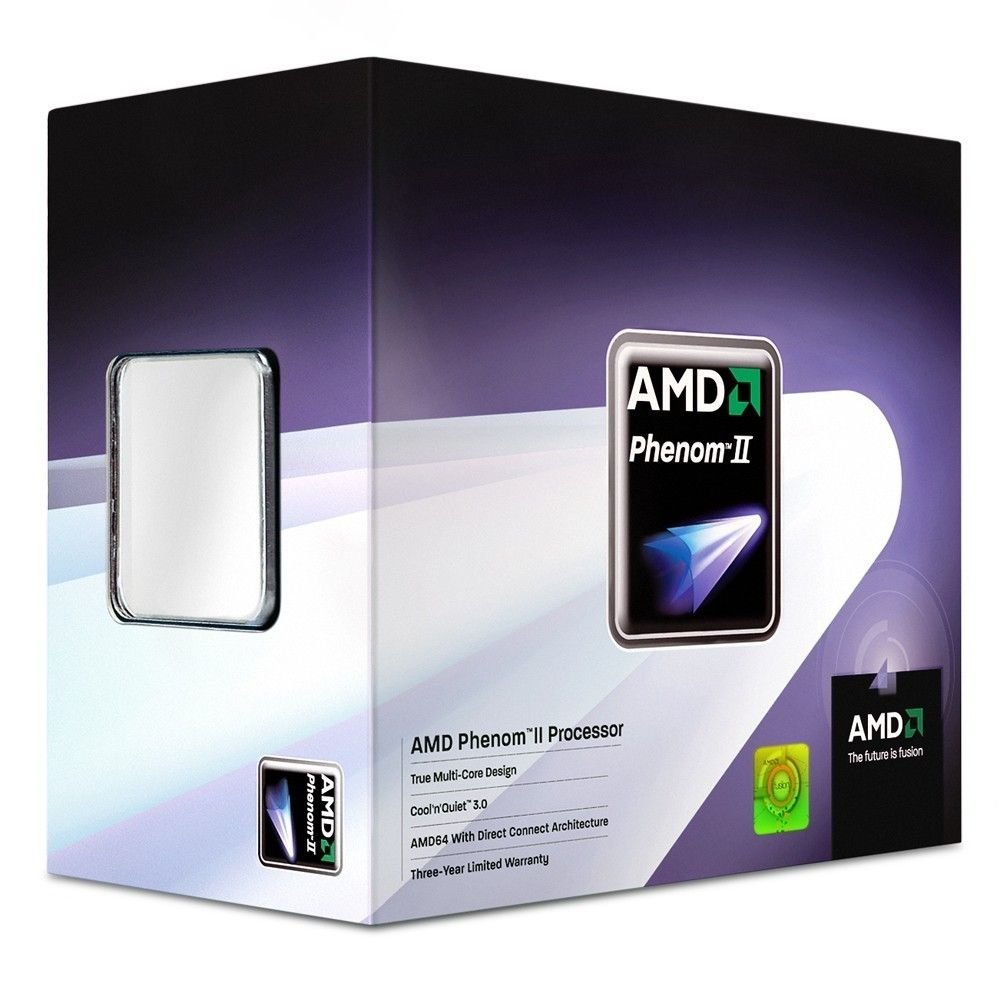 875 — 1.425
875 — 1.425 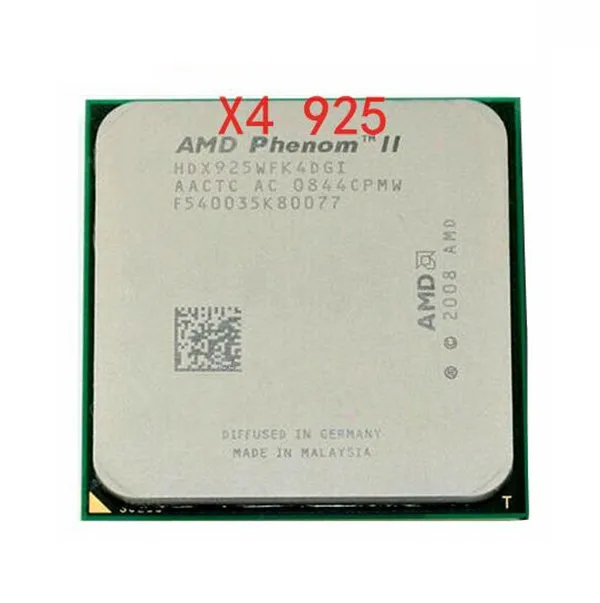 5x
5x Phenom II X3 processors
| Processor name | Stepping | Frequency | L2 cache | L3 cache | Hyper Transport Frequency | HT base frequency multiplier | Voltage | TDP | Socket |
| AMD Phenom II X3 700e | C2 | 2.4 GHz | 3x 512 KB | 6 MB | 2 GHz | 12x | 0.825 — 1.25 | 65W | AM3 |
| AMD Phenom II X3 705e | C2 | 2. 5 GHz 5 GHz |
3x 512 KB | 6 MB | 2 GHz | 12.5x | 0.800 — 1.25 | 65 W | AM3 |
| AMD Phenom II X3 710 | C2 | 2.6 GHz | 3x 512 KB | 6 MB | 2 GHz | 13x | 0.875 — 1.425 | 95W | AM3 |
| AMD Phenom II X3 715 | C2 | 2.8 GHz | 3x 512 KB | 6 MB | 2 GHz | 14x | 0.875 — 1.425 | 95W | AM2+ |
| AMD Phenom II X3 720 | C2 | 2.8 GHz | 3x 512 KB | 6 MB | 2 GHz | 14x | 0.875 — 1.425 | 95W | AM3 |
| AMD Phenom II X3 720 Black Edition | C2 | 2.8 GHz | 3x 512 KB | 6 MB | 2 GHz | 14x | 0.850 — 1.425 | 95W | AM3 |
| AMD Phenom II X3 740 Black Edition | C2 | 3. 0 GHz 0 GHz |
3x 512 KB | 6 MB | 2 GHz | 15x | 0.850 — 1.425 | 95W | AM3 |
Phenom II X4 9 processors0007
| Processor name | Stepping | Frequency | L2 cache | L3 cache | Hyper Transport Frequency | HT base frequency multiplier | Voltage | TDP | Socket |
| AMD Phenom II X4 805 | C2 | 2.5 GHz | 4x 512 KB | 4 MB | 2 GHz | 12.5x | 0.875 — 1.425 | 95W | AM3 |
| AMD Phenom II X4 810 | C2 | 2.6 GHz | 4x 512 KB | 4 MB | 2 GHz | 13x | 0.875 — 1.425 | 95W | AM3 |
| AMD Phenom II X4 820 | C2 | 2.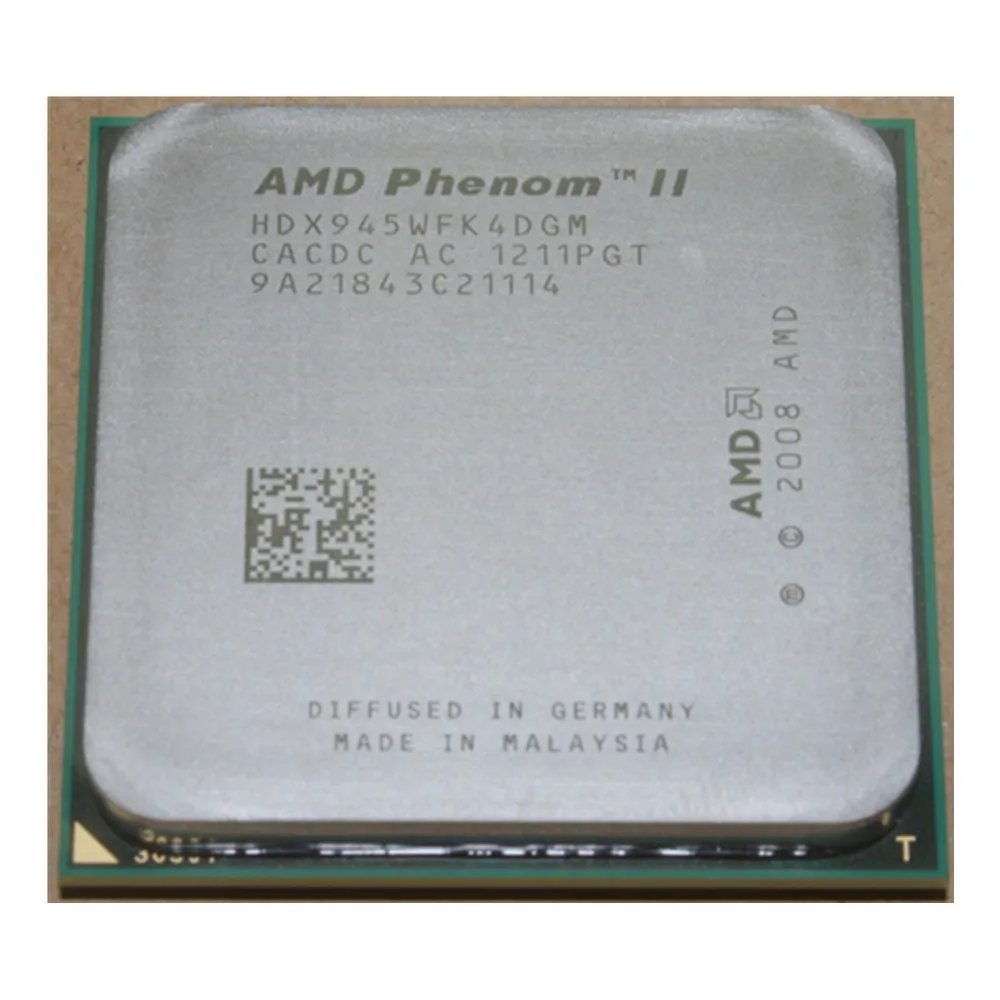 8 GHz 8 GHz |
4x 512 KB | 4 MB | 2 GHz | 14x | 0.9 — 1.425 | 95W | AM3 |
| AMD Phenom II X4 900e | C2 | 2.4 GHz | 4x 512 KB | 6 MB | 2 GHz | 12x | 0.850 — 1.250 | 65 W | AM3 |
| AMD Phenom II X4 905e | C2 | 2.5 GHz | 4x 512 KB | 6 MB | 2 GHz | 12.5x | 0.825 — 1.250 | 65 W | AM3 |
| AMD Phenom II X4 910 | C2 | 2.6 GHz | 4x 512 KB | 6 MB | 2 GHz | 13x | 0.875 — 1.425 | 95W | AM3 |
| AMD Phenom II X4 910e | C3 | 2.6 GHz | 4x 512 KB | 6 MB | 2 GHz | 13x | 0.850 — 1.250 | 65 W | AM3 |
| AMD Phenom II X4 920 | C2 | 2.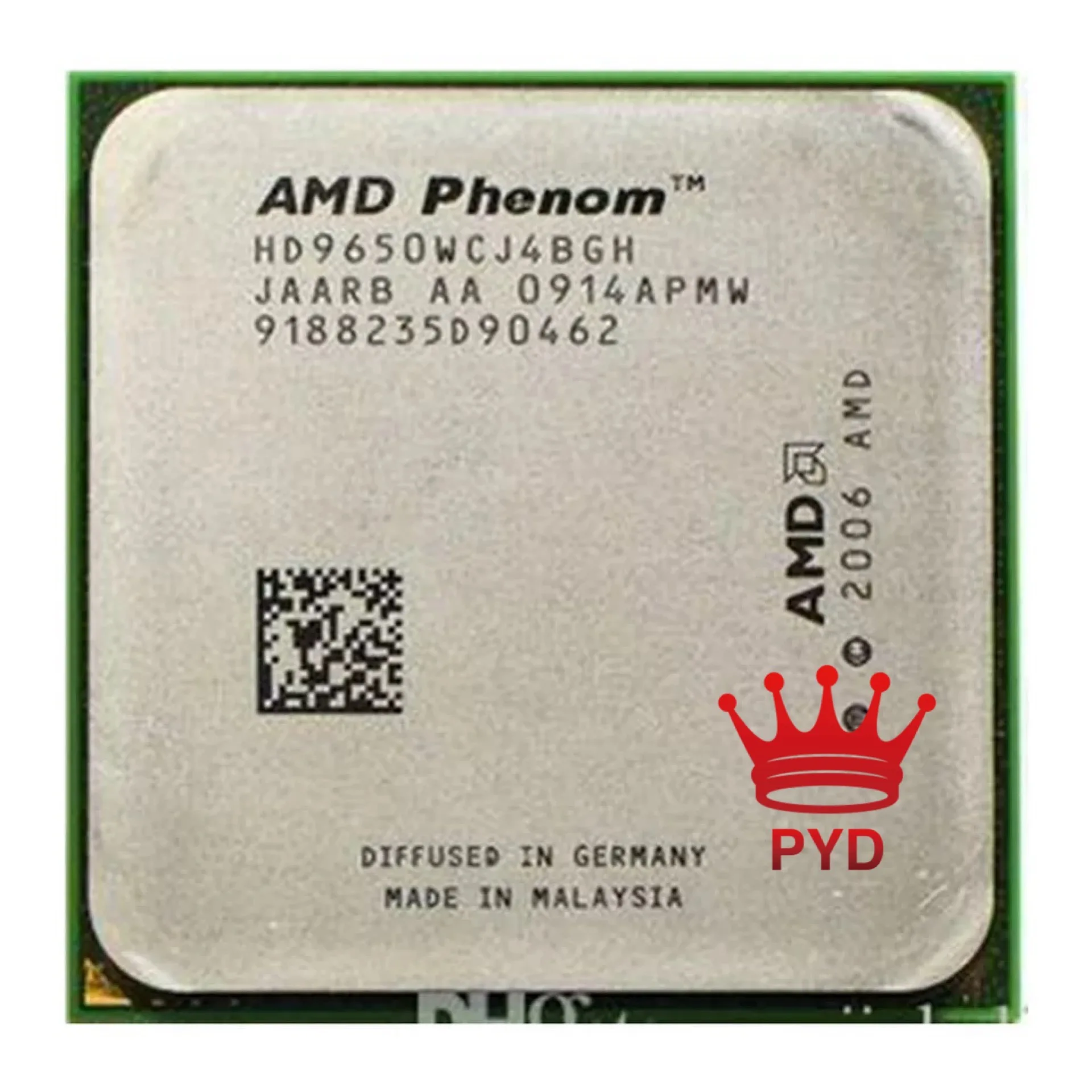 8 GHz 8 GHz |
4x 512 KB | 6 MB | 1.8 GHz | 14x | 0.875 — 1.425 | 125 W | AM2+ |
| AMD Phenom II X4 925 | C2 | 2.8 GHz | 4x 512 KB | 6 MB | 2 GHz | 14x | 0.850 — 1.425 | 95W | AM3 |
| AMD Phenom II X4 925 | C3 | 2.8 GHz | 4x 512 KB | 6 MB | 2 GHz | 14x | 0.9 — 1.400 | 95W | AM3 |
| AMD Phenom II X4 940 Black Edition | C2 | 3.0 GHz | 4x 512 KB | 6 MB | 1.8 GHz | 15x | 0.875 — 1.425 | 125 W | AM2+ |
| AMD Phenom II X4 945 | C2 | 3.0 GHz | 4x 512 KB | 6 MB | 2 GHz | 15x | 0.875 — 1.425 | 125 W | AM3 |
| AMD Phenom II X4 945 | C3 | 3. 0 GHz 0 GHz |
4x 512 KB | 6 MB | 2 GHz | 15x | 0.850 — 1.400 | 95W | AM3 |
| AMD Phenom II X4 955 | C2 | 3.2 GHz | 4x 512 KB | 6 MB | 2 GHz | 16x | 0.850 — 1.400 | 125 W | AM3 |
| AMD Phenom II X4 955 | C3 | 3.2 GHz | 4x 512 KB | 6 MB | 2 GHz | 16x | 0.850 — 1.400 | 125 W | AM3 |
| AMD Phenom II X4 955 Black Edition | C2 | 3.2 GHz | 4x 512 KB | 6 MB | 2 GHz | 16x | 0.875 — 1.425 | 125 W | AM3 |
| AMD Phenom II X4 955 Black Edition | C3 | 3.2 GHz | 4x 512 KB | 6 MB | 2 GHz | 16x | 0.825 — 1.425 | 125 W | AM3 |
| AMD Phenom II X4 965 Black Edition | C2 | 3.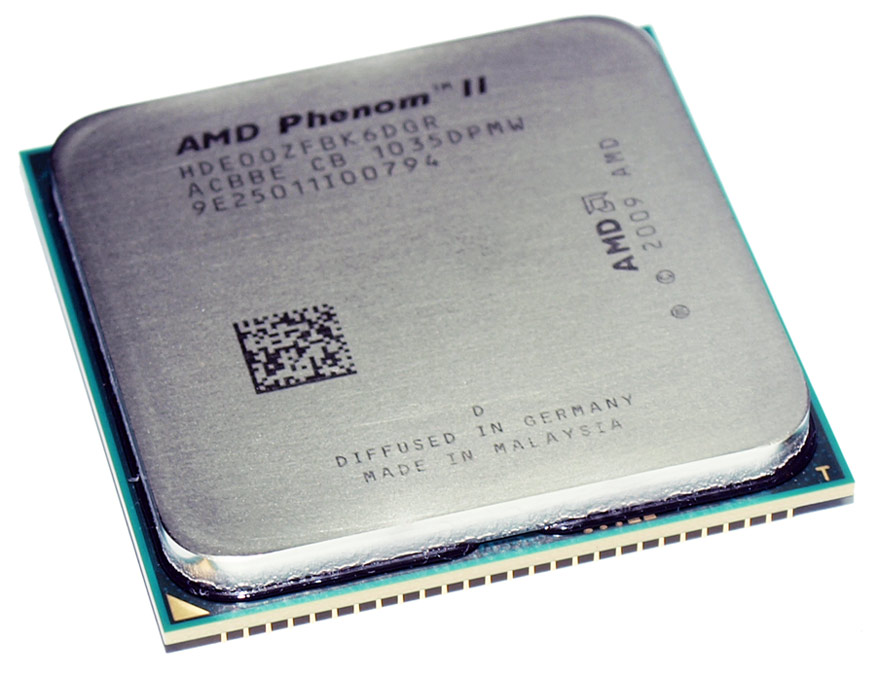 4GHz 4GHz |
4x 512 KB | 6 MB | 2 GHz | 17x | 0.850 — 1.425 | 140 W | AM3 |
| AMD Phenom II X4 965 Black Edition | C3 | 3.4GHz | 4x 512 KB | 6 MB | 2 GHz | 17x | 0.825 — 1.400 | 125 W | AM3 |
| AMD Phenom II X4 970 Black Edition | C3 | 3.5 GHz | 4x 512 KB | 6MB | 2 GHz | 17.5x | 0.825 — 1.400 | 125 W | AM3 |
| AMD Phenom II X4 975 Black Edition | C3 | 3.6 GHz | 4x 512 KB | 6 MB | 2 GHz | 18x | 0.825 — 1.400 | 125 W | AM3 |
| AMD Phenom II X4 980 Black Edition | C3 | 3.7GHz | 4x 512 KB | 6MB | 2GHz | 18.5x | 0.825 — 1.400 | 125W | AM3 |
Phenom II X6 processors
| Processor name | Stepping | Frequency | L2 cache | L3 cache | Hyper Transport Frequency | HT base frequency multiplier | Voltage | TDP | Socket |
| AMD Phenom II X6 1035T | E0 | 2.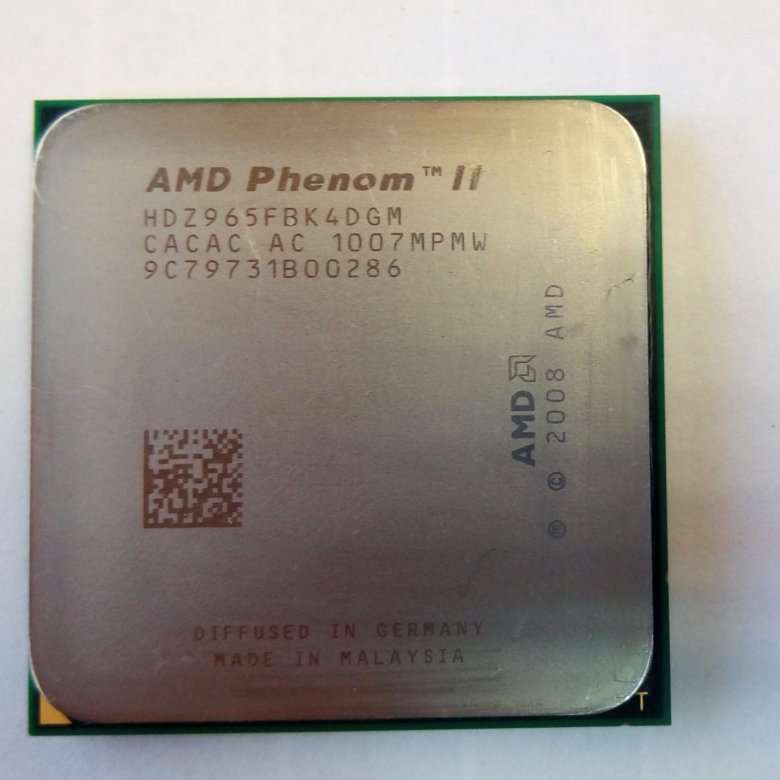 6 GHz 6 GHz |
6x 512 KB | 6MB | 2.0 GHz | 13x | 1.075 — 1.375 | 95W | AM3 |
| AMD Phenom II X6 1045T | E0 | 2.7GHz | 6x 512 KB | 6 MB | 2.0 GHz | 13.5x | 1.075 — 1.375 | 95W | AM3 |
| AMD Phenom II X6 1055T | E0 | 2.8 GHz | 6x 512 KB | 6 MB | 2.0 GHz | 14x | 1.125 — 1.400 | 125W | AM3 |
| AMD Phenom II X6 1075T | E0 | 3.0 GHz | 6x 512 KB | 6 MB | 2.0 GHz | 15x | 1.125 — 1.400 | 125W | AM3 |
| AMD Phenom II X6 1090T Black Edition | E0 | 3.2 GHz | 6x 512 KB | 6 MB | 2.0 GHz | 16x | 1.125 — 1.400 | 125W | AM3 |
| AMD Phenom II X6 1100T Black Edition | E0 | 3.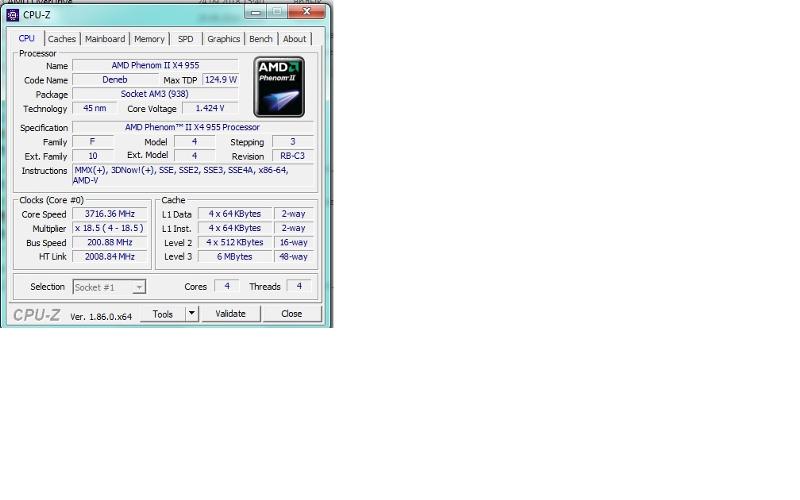 3GHz 3GHz |
6x 512 KB | 6 MB | 2.0 GHz | 16.5x | 1.125 — 1.400 | 125W | AM3 |
Mobile Phenom II processors 7
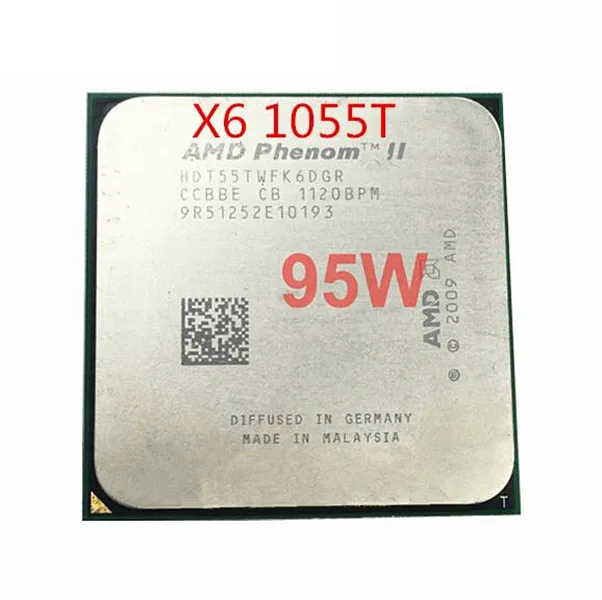 0 GHz
0 GHz  7 GHz
7 GHz Leave a comment
AMD Athlon II X2 260, Phenom II X6 1075T and FX-8350 processors
Time-tested models for the AM3+ platform in a modern software environment
Our recent testing of different processors with a discrete video card opened the way for us to study platforms that do not have integrated graphics: firstly, now we have something to compare the results with, and secondly , we found that it generally makes sense to do this — anyway, in non-gaming applications, the influence of the video card is insignificant. And we decided to start doing this with AM3 +: firstly, no changes have been taking place within its framework for a long time, and secondly, and it looks like it will never happen again. However, the platform continues to be of interest to many users due to the presence of productive (albeit in specific areas) budget processors within its framework, and very many have its representatives on hand. Actually, our testing today will be primarily useful for them, since two of the three processors found at hand generally belong to models for AM3, however, this is suitable for determining the approximate correspondence between this platform and modern devices, and expanding the list of tested processors (if any request from readers) it will not be too difficult for us later.
And we decided to start doing this with AM3 +: firstly, no changes have been taking place within its framework for a long time, and secondly, and it looks like it will never happen again. However, the platform continues to be of interest to many users due to the presence of productive (albeit in specific areas) budget processors within its framework, and very many have its representatives on hand. Actually, our testing today will be primarily useful for them, since two of the three processors found at hand generally belong to models for AM3, however, this is suitable for determining the approximate correspondence between this platform and modern devices, and expanding the list of tested processors (if any request from readers) it will not be too difficult for us later.
Test bench configuration
| Processor | AMD Athlon II X2 260 | AMD Phenom II X6 1075T | AMD FX-8350 |
| Core name | Regor | Thuban | Vishera |
| Technology | 45 nm | 45 nm | 32 nm |
| Core frequency, GHz | 3. 2 2 |
3.0/3.5 | 4.0/4.2 |
| Number of cores (modules) / threads | 2/2 | 6/6 | 4/8 |
| L1 cache (total), I/D, KB | 128/128 | 384/384 | 256/128 |
| L2 cache, KB | 2×1024 | 6×512 | 4×2048 |
| L3 cache, MiB | — | 6 | 8 |
| RAM | 2×DDR3-1066 | 2×DDR3-1333 | 2×DDR3-1866 |
| TDP, W | 65 | 125 | 125 |
| Average price 900 39 | T-6215781 | T-6411041 | T-8493626 |
basically an estimate — we just wanted to evaluate what we can expect from the AM3 + qualitatively, so we did not actively search for various processor models, limiting ourselves, as already mentioned above, to three very different ones that literally turned out to be «at hand». In the future, the list of models, if there is interest from readers, can be expanded, since there are still no difficulties with their “extraction”.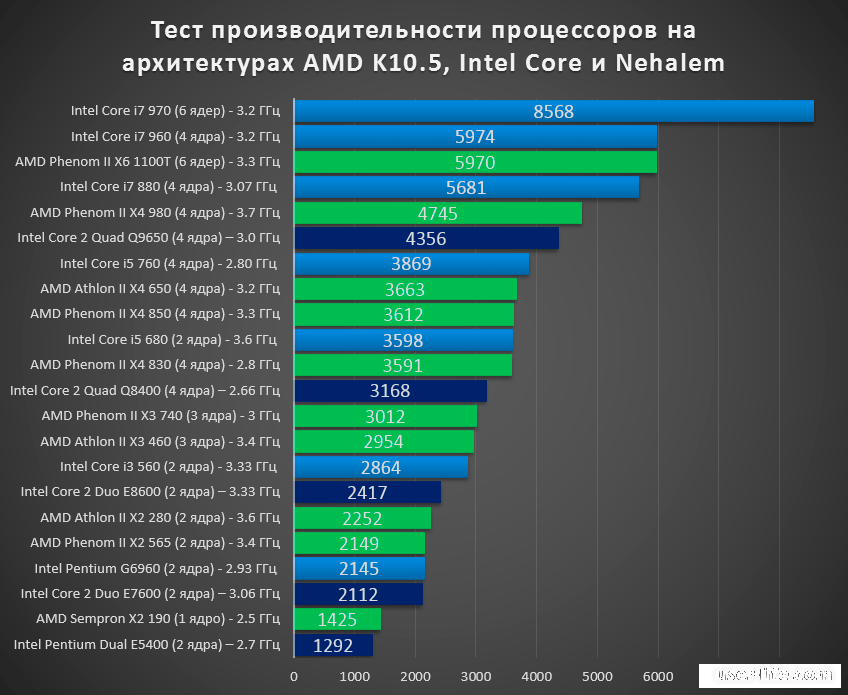 Especially the newest models of the FX line, which have long been similar to APUs for FM2 / FM2 +, having a larger number of modules and a third-level cache. Today we have only one such model — not the fastest in general (since there are both FX-8370 and «steroid» FX-9 in the line000 with an amazing heat pack, but also with standard frequencies up to 5 GHz), but well and repeatedly studied. As a result, and well suited for assessing what you can generally expect from a four-module FX, and what is not worth it.
Especially the newest models of the FX line, which have long been similar to APUs for FM2 / FM2 +, having a larger number of modules and a third-level cache. Today we have only one such model — not the fastest in general (since there are both FX-8370 and «steroid» FX-9 in the line000 with an amazing heat pack, but also with standard frequencies up to 5 GHz), but well and repeatedly studied. As a result, and well suited for assessing what you can generally expect from a four-module FX, and what is not worth it.
Two more processors, much older. However, Phenom II X6 1075T at the time of its release in 2010 could claim high performance, overtaking, for example, all Core i5 of that time in the overall standings. And Athlon II X2 did not aim at such heights, competing with Celeron and Pentium. But the old Celeron and Pentium, which, for obvious reasons, are far behind modern ones. In this regard, we are interested in the Athlon X2 260 — this is a slow dual-core processor almost five years ago, but many people still have such and similar devices in their hands.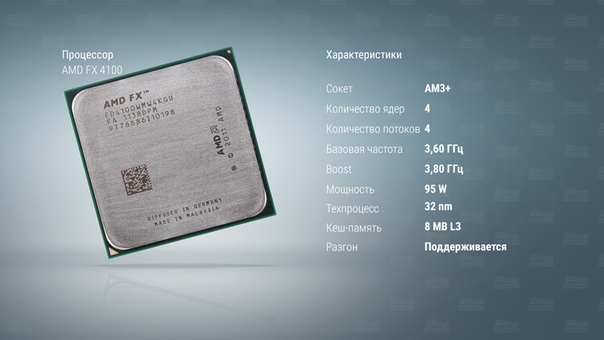 Therefore, how they look against the background of a more modern range of AMD and Intel processors is very interesting.
Therefore, how they look against the background of a more modern range of AMD and Intel processors is very interesting.
| Processor | AMD A10-7850K | Intel Pentium G3470 | Intel Core i3-4170 | Intel Core i5-4690K |
| Kernel name | Kaveri | Haswell | Haswell | Haswell |
| Production technology | 28 nm | 22 nm | 22 nm | 22 nm |
| Core frequency, GHz | 3.7/4.0 | 3.6 | 3.7 | 3.5/3.9 |
| Cores/Threads | 2/4 | 2/2 | 2/4 | 4/4 |
| L1 cache ( total), I/D, KB | 192/64 | 64/64 | 64/64 | 128/128 |
| L2 cache, KB | 2×2048 | 2×256 | 2 × 256 | 4 × 256 |
| L3 cache, MIB | — | 3 | 3 | 6 |
| RAM | 2×DDR3-2133 | 2×DDR3-1600 | 2×DDR3-1600 | 2×DDR3-1600 | TDP, W | 95 | 53 | 54 | 88 |
| Graphics | Radeon R7 | HDG | HDG 4400 | HDG 4600 |
| in GP / EU | 512 GP | 10 EU | 20 EU | 20 EU |
| Frequency std/max, MHz | 720 | 350/1100 | 350/1150 | 350/1200 |
| Average price | T-1067 4781 | T-12649826 | T-12515768 | T-10887398 |
As for comparative benchmarks, we didn’t have much choice — even though in most tests (with the exception of gaming, of course) a specific video card does not matter, it’s better to do without rough estimates when it is possible to give accurate ones. Moreover, the set of processors tested with the Radeon R7 260X last time is quite representative, but only the results of the Core i7-479 are redundant.0K. We definitely need the A10-7850K, and fast Pentiums, Core i3s and Core i5s won’t hurt either.
Moreover, the set of processors tested with the Radeon R7 260X last time is quite representative, but only the results of the Core i7-479 are redundant.0K. We definitely need the A10-7850K, and fast Pentiums, Core i3s and Core i5s won’t hurt either.
As for other test conditions, they were equal, but not the same: the frequency of RAM operation was the maximum supported according to the specifications for all, except Athlon II X2, which also works smoothly with DDR3-1333, although no one promises this officially. But its volume (8 GB) and system drive (Toshiba THNSNh356GMCT, 256 GB) were the same for all subjects.
Test methodology
To evaluate performance, we used our performance measurement methodology using iXBT Application Benchmark 2015 and iXBT Game Benchmark 2015. We normalized all test results in the first benchmark against the results of the reference system, which this year will be the same for laptops , and for all other computers, which is designed to make it easier for readers to compare and choose:
| Processor | Intel Core i5-3317U | |
| Chipset | Intel HM77 Express | |
| Memory | 4GB DDR3-16 00 (Dual Channel) | |
| Graphics | Intel HD Graphics 4000 | |
| Drive | SSD 128 GB Crucial M4-CT128M4SSD1 | |
| Operating system | Windows 8 (64-bit) Intel 9 cores0039 | 9. 18.10.3186 18.10.3186 |
iXBT Application Benchmark 2015
Applications of this type (actively loading all the processor cores they can find) are the best application for multi-module AMD processors. As a result, the FX-8350 easily outperforms even any Core i5, and, of course, it is twice as fast as AMD’s best solutions for FM2+, where the architecture is the same, but there are half as many modules. The difference with the previous generation is also visible — the FX-8350 is one and a half times faster than the Phenom II X6 1075T. Yes — the last one is not the fastest Phenom II X6, however, the FX-8350 is at least nominally not the fastest FX for a long time.
The difference between the Athlon II X2 260 and the Pentium G3470 is also very indicative. As you can see, the statement “dual-core processors do not cope well with multi-threaded software” is not entirely true, since dual-core processors … are also different. Their performance can easily vary by a couple of times. Of course, with the same architecture, the more cores, the better — the fastest Pentium is twice as slow as the Core i5. But the six-core Phenom II X6 1075T is not three times slower (as one might assume from the number of cores), but a little more than one and a half. And technologies such as SMT (Hyper-Threading or AMD “x86-cores”) also work and affect the overall picture: after all, the same FX-8350 has as many “real” cores as the Core i5 and fewer than Phenom II X6, however, running two threads at the same time each allows you to get a better result.
Of course, with the same architecture, the more cores, the better — the fastest Pentium is twice as slow as the Core i5. But the six-core Phenom II X6 1075T is not three times slower (as one might assume from the number of cores), but a little more than one and a half. And technologies such as SMT (Hyper-Threading or AMD “x86-cores”) also work and affect the overall picture: after all, the same FX-8350 has as many “real” cores as the Core i5 and fewer than Phenom II X6, however, running two threads at the same time each allows you to get a better result.
But in these applications, the benefits of multi-core and multi-threading are less. In addition, the FX-8350 fell into the same trap as the recently Core i7-4790K: in the multi-threaded subtest of Adobe After Effects CC 2014.1.1, it lacked 8 GB of memory, which is why the whole result turned out to be lower than it could would: only at the level of Core i3. However, Phenom II X6 and A10 are equivalent to each other here (which is also very revealing) and both are Pentiums, so the older FX are a step forward anyway.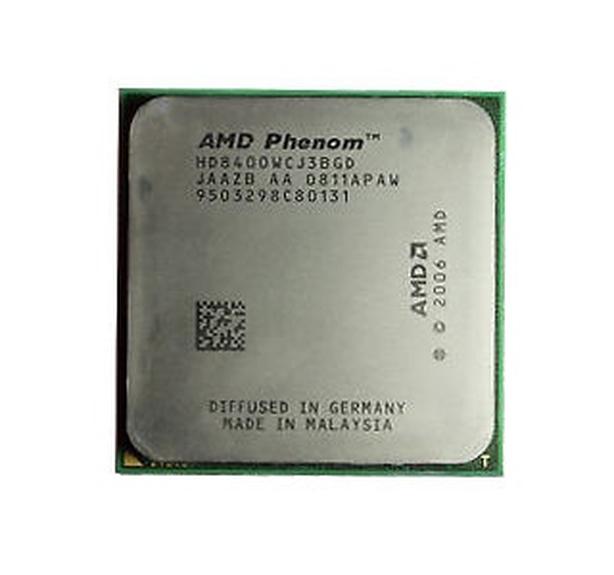 Let already (unlike the previous case) we are not talking about direct competition with the Core i5 and i7, but other AMD models are even worse under such loads.
Let already (unlike the previous case) we are not talking about direct competition with the Core i5 and i7, but other AMD models are even worse under such loads.
Working with raster images (private, but the most common representative of which are photographs) in modern software is not a strong point of AMD’s modular architecture. On the other hand, the old architecture of the company’s processors was even worse for this: despite the support for multithreading, six-core Phenoms look only slightly better than Pentiums and worse than two-module APUs, while three-four-module processors are still better. To some extent, even Core i3 competitors, though there are models with a TDP of 35 W, so such a competition is initially losing for FX. That is, the general verdict is not so bad, but not the tasks for which it makes sense to choose these processors.
When a couple of threads are enough and you can generally talk about optimization «for Core 2 Duo», you get a total defeat. However, no one expected anything else, and the Core also doesn’t look the best here, only slightly outperforming Celeron and Pentium.
Audition, as has already been established, can use several computational threads, but at the same time it increases performance rather sluggishly (this, by the way, is a good hint to those who consider total support for multi-core processors a sufficient condition for strong software acceleration — it is not always such) . It is noteworthy that some 9 independent cores are more useful for the program than «threads», which is why the result of Phenom II X6 is relatively good. But in general, for all AMD processors (both architectures) this is not the most “convenient” application — it’s hard to overtake only Pentium, and even Core i3 is already faster.
Multi-threaded integer, where modules work well — «semi-kernels» are not worse than kernels. In any case, the old cores of AMD itself — since then, Intel processors have stepped far ahead, so the two modules are only competitors of two single-threaded Haswell cores, but not spiced with Hyper-Threading. But the competitors of the four modules should already be looked for among the Core i7 (at least low-power ones), but not in the Core i5 company. Considering the prices — the alignment is good.
Considering the prices — the alignment is good.
In archivers, the effect is heavily blurred by single-threaded unpacking. As in real life in general: as you can see, among the application software there are not so many applications that can fully use a large number of at least cores, at least modules, at least some green men walled up with accounts in the processor 🙂
A small «platform» loss, but just that it is small, and as usual, little depends on the processors themselves. Provided that they do not belong to too different classes (tablet and extreme for example), although in this case, with the same drive, the difference will be quite small.
In general and average, it turned out that the FX-8350 is a little better than the modern Core i3, and the Phenom II X6 1075T outperformed only the older Pentium. The result is funny, shocking to some users, but more than understandable. After all, what is the performance of a multi-core processor? The product of the performance of a single thread multiplied by the number of threads used by the software. With the first, everything is clear — the higher, the higher the performance in any programs, since there will always be one stream of computational code. But with the second one… The more computation threads are simultaneously supported by the processor, the greater the number of programs that will not load all of them. The ideal case is dual-core processors with “single-threaded” cores: they are most often loaded at 100%. And right away, by the way, it is clear that the performance of the «Athlon» cores is about one and a half times less than that of the «Hazwell» cores (we get another 10 percent due to the clock frequency). But the more cores there are, the more likely it is that only a part of them will be fully used, since they will turn out to be “superfluous” for a specific application. That is why the extensive path (increasing the number of cores) is no worse than the intensive one (increasing performance per thread) only under ideal conditions. In real — intense is much more preferable.
With the first, everything is clear — the higher, the higher the performance in any programs, since there will always be one stream of computational code. But with the second one… The more computation threads are simultaneously supported by the processor, the greater the number of programs that will not load all of them. The ideal case is dual-core processors with “single-threaded” cores: they are most often loaded at 100%. And right away, by the way, it is clear that the performance of the «Athlon» cores is about one and a half times less than that of the «Hazwell» cores (we get another 10 percent due to the clock frequency). But the more cores there are, the more likely it is that only a part of them will be fully used, since they will turn out to be “superfluous” for a specific application. That is why the extensive path (increasing the number of cores) is no worse than the intensive one (increasing performance per thread) only under ideal conditions. In real — intense is much more preferable.
Another way to intensively increase performance is not to increase the number of cores, but to add computation threads. Under ideal conditions, it is obviously worse than increasing the number of cores, in real conditions it is probably also worse, but much cheaper. Both companies use it now, but in general, we can conclude that AMD’s modular architecture is more efficient than Intel’s Hyper-Threading, but also more costly in terms of transistors. In principle, the company mostly fulfilled its promises, but direct competition still did not work out — precisely because Intel has higher performance per thread. Therefore, dual-module processors are able to lose on average to dual-core processors without HT, while quad-module processors look decent only against the background of Core i5, but not i7. Alas, this is the harsh truth of life.
Gaming applications
For obvious reasons, when using the Radeon R7 260X, we limit ourselves to the minimum quality mode (this video card by itself is not enough for maximum settings), but in full Full HD resolution (with this, it, unlike many integrated solutions, does a great job).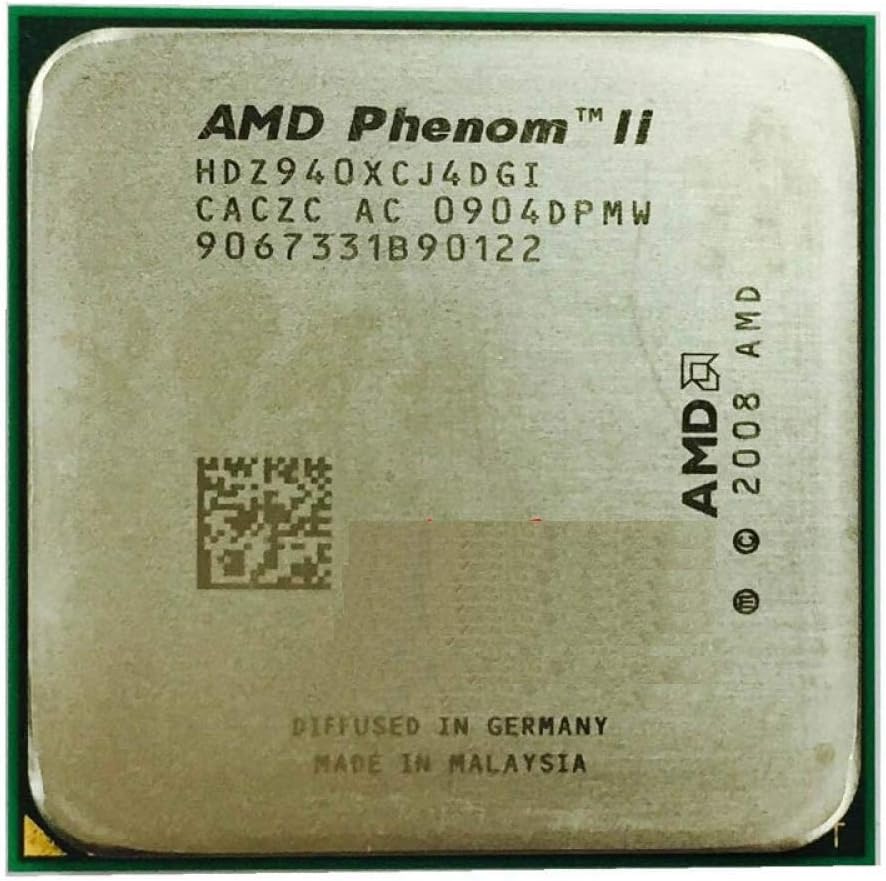
The CPU requirements for this game are minimal and the graphics adapter requirements are high, but we have only one last one today. As a result, performance indicators are almost the same for everyone 🙂
You can’t say the same about «Tanks». Let’s leave aside Intel processors, which are practically unattainable in terms of single-threaded performance (and it is required here), and let’s see what we have «in the group». And in it, the most interesting thing is the approximate parity between the A10-7850K and the Phenom II X6 1075T. And, as it turned out, for the A10 in this game, the discrete only gives a reduction in the frame rate compared to the integrated core, but Phenom II did not have such. That is, such is the progress in a certain class. Nobody doubted that the FX-8350 was faster than this pair, but there were doubts that the Athlon II X2 260 would do the job at all. Still too old and weak solution. And, indeed, the performance is low, but you can play it;)
Due to the fact that the benchmark for this game requires support for AVX instructions, there are no results for half of the subjects. However, they are not so interesting — Grid2 is quite efficient on processors for ultrabooks with integrated graphics, i.e., in general, it works everywhere.
However, they are not so interesting — Grid2 is quite efficient on processors for ultrabooks with integrated graphics, i.e., in general, it works everywhere.
How to illustrate the expression «not enough processor»? But something like this — pay attention to the results of Athlon II X2 260. But it is old and initially not aimed at high results, so based on this you should not expand the statement to «there are not enough dual-core processors» (which some are trying to do) — compare the results with the Pentium G3460, which is about twice as fast. In terms of overall performance outside of games, it is also about twice as fast, which directly hints at the fact that there are “not enough” usually slow processors. Regardless of the number of cores. It’s just that in game engines that support multithreading, ceteris paribus, a multi-core processor is faster, but ceteris paribus.
And here is just an illustration of this case. As we already wrote, Metro 2033 is more demanding on processors than the next games in the series, and the engine supports multi-threading.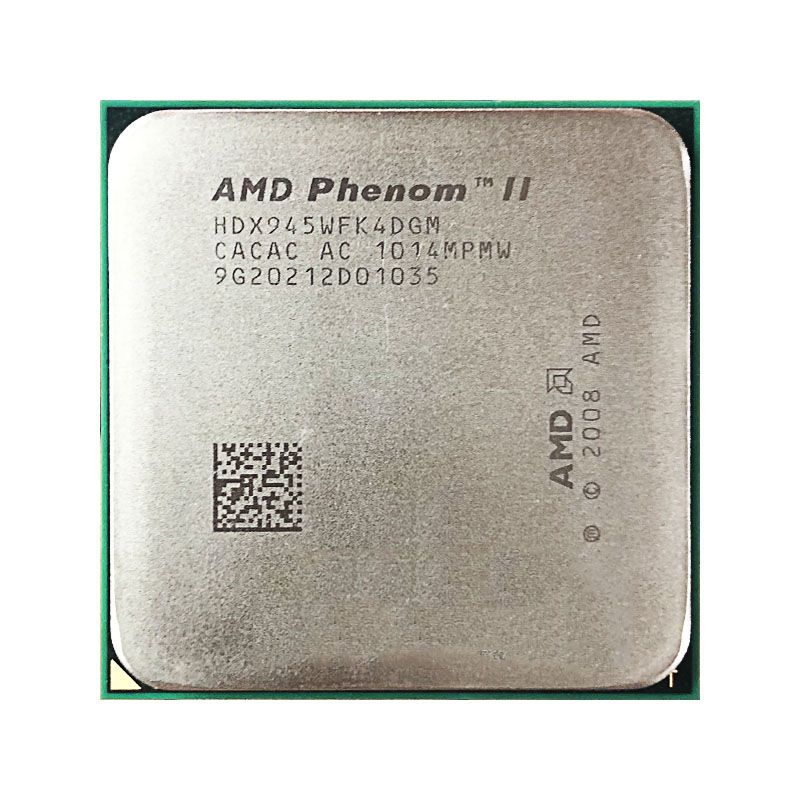 As a result, the Athlon II X2 260 cannot be played at all, but the Phenom II X6 1075T is about three times faster than it. Ideal scaling is actually three times the cores and three times the performance. But this is when comparing processors of the same architecture. And when they are different, it suddenly turns out that the same X6 1075T cannot catch up with the banal Core i3-4170, and the FX-8350 is capable of this, but it is already lagging behind the Core i5.
As a result, the Athlon II X2 260 cannot be played at all, but the Phenom II X6 1075T is about three times faster than it. Ideal scaling is actually three times the cores and three times the performance. But this is when comparing processors of the same architecture. And when they are different, it suddenly turns out that the same X6 1075T cannot catch up with the banal Core i3-4170, and the FX-8350 is capable of this, but it is already lagging behind the Core i5.
In Hitman, this is not the first time that the alignment is already similar to Metro 2033, so this is not some kind of «twist» of a certain game, but an objective reality that manifests itself under a certain set of circumstances.
A10 and Phenom II are barely enough for the game, but they are enough — unlike the old Athlon II. The rest are faster, but as we already know, you won’t be able to get high results here when using this video card.
Amazing unanimity not for the first time — the game has very low CPU requirements, so give it a decent video card and everything will fly.
The game is susceptible to single-threaded performance, so all Intel solutions are on a par, while AMD has inconsistencies due to the fact that processors belong to different architectures and, in general, are designed differently.
Everything is on a par — processor dependence is low. At least in the minimum settings mode. Differences between processors may appear higher, but it makes sense to check this on a faster video card — the requirements for it are quite large, which is noticeable when you try to increase the picture quality.
Total
In principle, we did not expect any discoveries from the FX-8350 — it is architecturally similar to the APU for FM2, but it has «more than everything»: modules, cache memory, frequencies. As a result, when what it has “more” matters (and the frequency, for example, always has it), you get a good increase in performance and the ability to overtake the Core i5. And when it doesn’t work out, it turns out that FX and APU are almost the same, and at the level of older Pentiums just «heavy» loads, the buyer has the opportunity to save a lot by buying a four-module FX, and not a more expensive Intel processor from one of the older families. Looking at prices, this statement can be extended to three-module models, but two-module models have serious competitors in AMD’s assortment, but this, in general, is not news to anyone.
Looking at prices, this statement can be extended to three-module models, but two-module models have serious competitors in AMD’s assortment, but this, in general, is not news to anyone.
The time of the “old” AMD architecture is gone forever. From which one should not conclude that it’s time to run to change the old Phenom (if they already exist) for something new — as long as it works and meets the requirements, let it work. However, it’s not worth being surprised that as many as six cores, even at full load, can hardly always and with difficulty overtake only two. The architecture is old, but progress does not stand still.
But the results of gaming tests, let’s say, even amused us. First of all, this concerns the Athlon II X2 260, which easily confirmed the thesis — for games, you need a video card first, and then everything else. Yes, of course, the frame rate in his case is lower than when using other subjects, and some games are completely impossible to play even on the Radeon R7 260X (note that the card is inexpensive, but it already lacks such a processor).